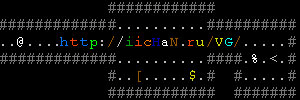https://www.justonecookbook.com/melon-pan/
What is Melon Pan?
Melon Pan is sweet bread covered in a thin layer of crisp biscuit/cookie crust with grid line pattern on top. The Japanese word for bread is “pan (パン)”, which came from the Portuguese word for bread. Now why is it called “melon“?
Does it taste like melon? No, traditionally the bread does NOT include melon flavor or the fruit itself. Then why is it called Melon Pan if there is no melon flavor?
There are a few different theories for the origin of Melon Pan’s name (still no conclusive theory even today).
Some say that the original melon pan was invented during the Meiji Era. The bread resembled an oriental melon (マクワウリ) with the parallel lines on the crust, and was filled with sweet white bean paste (shiro-an) inside. During that time, the oriental melon was sold as “melon” so they started to call this “Melon Pan”.
In Taisho Era, the similar round bread with biscuit/cookie crust was introduced to western and southern western Japan (Osaka and Hiroshima area), and they named it “Sunrise (サンライズ)” bread. Later on, this round Sunrise bread started to be sold as Melon Pan throughout Japan, as the appearance resembles a muskmelon, which was (and still is) highly prized fruit.
Today, if you visit the Kansai area, the football shape bread you see above with white bean paste filling is what they call Melon Pan. They still refer to the round bread with biscuit crust Sunrise bread (while it’s known as melon pan everywhere else). Our local Andersen bakery that started in Hiroshima also calls their Melon Pan “Sunrise”. In Shikoku Island, Melon Pan is called “Koppepan (コッペパン)”.
Other theories on the origin of the name says the word “melon” comes from “meringue (メリンゲ)”, which is placed on top of the bread dough before being baked. Maybe we’ll find out the Melon Pan’s origin one day. Who knew Melon Pan is quite mysterious bread?!

